Sign up for workout ideas, training advice, reviews of the latest gear and more.

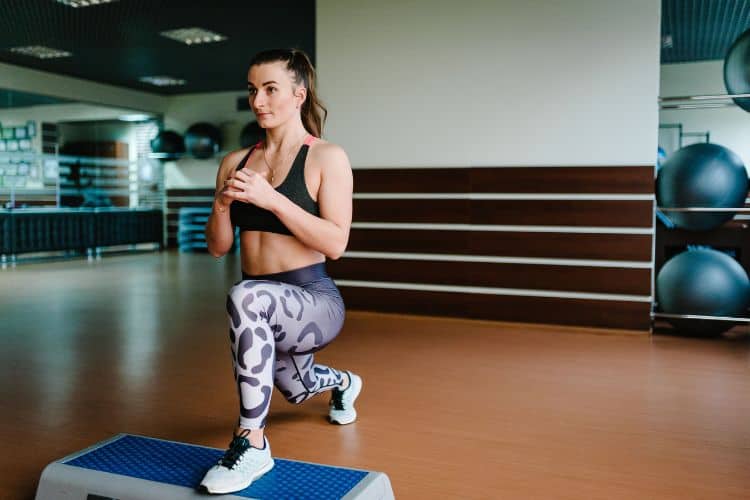

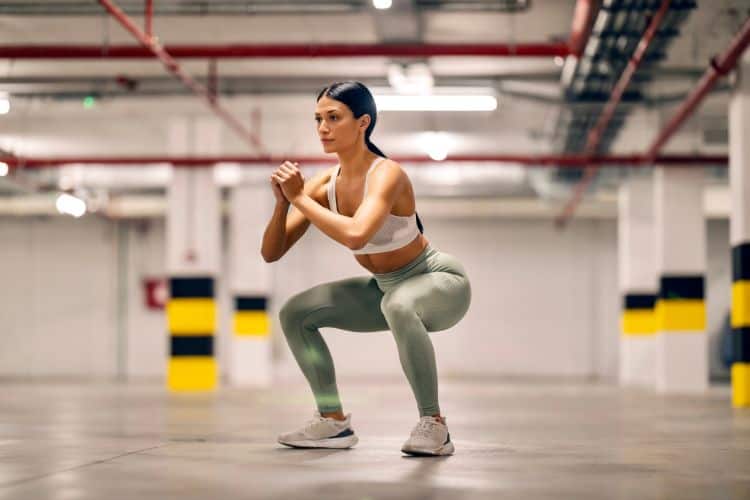
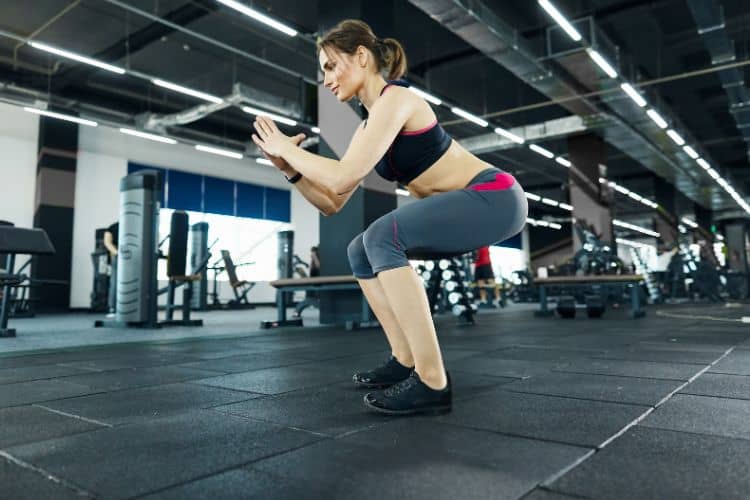
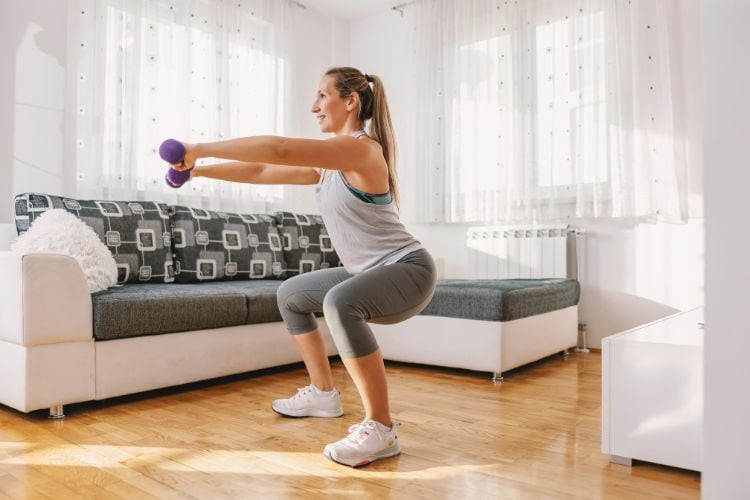
Strength training is one of the most effective ways to build muscle, increase metabolism, and boost confidence. For beginners, the idea of starting a strength routine at the gym can feel intimidating. The good news? You don’t need expensive equipment or a gym membership to begin. With just your bodyweight, a set of dumbbells, or resistance bands, you can start an at-home beginner strength training workout today. In this guide, we’ll break down the fundamentals of at home beginner strength training, the benefits of working out at home, step-by-step beginner exercises, and sample routines you can follow. By the end, you’ll have the tools and confidence to begin your strength training journey right in your living room.
Strength training is often associated with weightlifting in the gym, but home workouts can be just as effective when designed correctly. Working out at home eliminates common barriers like travel time, gym intimidation, or expensive memberships. Instead, you can focus on building consistency in a familiar environment.
For beginners, this makes it easier to stick to a routine. Home training also allows you to move at your own pace, practice proper form without feeling rushed, and gradually build strength. Over time, as your confidence grows, you can increase intensity by adding weights or resistance.
Strength training helps you build lean muscle mass, which in turn boosts your metabolism. Even at rest, muscle burns more calories than fat, making strength training a powerful tool for weight management.
Beginners who start resistance training see improvements in bone density and joint stability. This helps prevent injuries, supports posture, and reduces the risk of osteoporosis later in life.
Strength training has been linked to reduced stress, improved sleep, and increased self-confidence. For beginners working out at home, the privacy and comfort of a familiar space can make starting even less stressful.
Everyday movements like carrying groceries, lifting boxes, or climbing stairs become easier with stronger muscles. At-home training improves functional fitness that directly impacts daily life.
Before starting your beginner program, it’s helpful to create a simple workout space. This doesn’t require much—just enough room to move comfortably.
Consistency matters more than perfection. Having a space ready will make it easier to stick to your workout habit.
In the beginning, correct form is more important than the amount of weight lifted. Practicing proper technique ensures you avoid injury and build a strong foundation.
For beginners, full-body strength workouts are the most efficient. Training all major muscle groups 2–3 times a week provides balanced development and helps prevent overuse injuries.
Progressive overload means gradually increasing the challenge over time. Beginners can start with bodyweight, then add resistance bands or light dumbbells as strength improves.
Rest days are just as important as workout days. Muscles grow stronger during recovery, so avoid training the same muscle groups two days in a row.
Never skip a warm-up. Warming up prepares your muscles, joints, and nervous system for movement, reducing the risk of injury.
A 5–10 minute warm-up may include:
This primes your body for strength exercises while improving mobility.
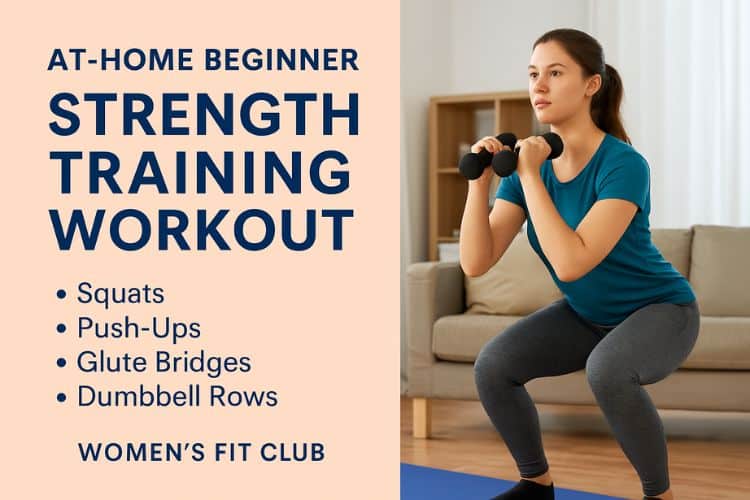
Here are some foundational moves for your at-home strength training routine. These exercises target all major muscle groups and can be done with bodyweight or light weights.
Squats
Squats build strength in your quads, glutes, and hamstrings. Stand with feet shoulder-width apart, lower your hips back and down as if sitting in a chair, and then return to standing. Beginners can start with bodyweight and progress to holding dumbbells.
Glute Bridges
Lie on your back with knees bent and feet flat on the floor. Press through your heels to lift your hips toward the ceiling, squeezing your glutes at the top. This strengthens the glutes and core.
Lunges
Step forward with one foot and bend both knees to lower into a lunge. Push back up and repeat on the other side. This improves leg strength, stability, and balance.
Push-Ups
Start in a plank position, lower your body toward the floor, and press back up. Beginners can modify by keeping knees on the floor. Push-ups strengthen the chest, shoulders, and triceps.
Dumbbell Rows
With a dumbbell in one hand, hinge at the hips and row the weight toward your ribcage. This targets the back and biceps. If you don’t have dumbbells, use a filled water bottle.
Shoulder Press
Hold dumbbells at shoulder height and press upward until arms are extended. This exercise strengthens the shoulders and triceps.
Plank
Hold a push-up position with elbows or hands, keeping your body in a straight line. Start with 20 seconds and build up over time.
Dead Bug
Lie on your back with arms extended toward the ceiling and knees bent at 90 degrees. Lower opposite arm and leg toward the floor while keeping your back flat. This builds core stability.
Russian Twists
Sit on the floor, lean back slightly, and twist your torso side to side. Beginners can keep feet on the floor, while advanced versions lift the feet.
Here’s a simple routine you can start with. Perform each exercise for 2–3 sets of 10–12 reps. Rest 30–60 seconds between sets.
This workout can be completed in about 25 minutes and trains the entire body.
Strength training is about progression. Once exercises start to feel easier, increase the challenge by:
These small adjustments ensure continuous improvement without overwhelming your body.
Jumping into strength exercises without warming up increases injury risk.
It’s better to start with lighter resistance and build gradually rather than risking injury with heavy weights.
Muscles need rest to grow. Overtraining can lead to burnout and soreness.
Incorrect form reduces effectiveness and can cause injuries. Beginners should prioritize technique over speed or resistance.
Your results depend not only on your workouts but also on your nutrition.
Eating balanced meals around your training sessions enhances energy, performance, and recovery.
Beginners often underestimate the power of tracking. Keep a journal or use a fitness app to log:
Tracking helps you see progress, stay motivated, and adjust routines when necessary.
Consistency is key in strength training. Beginners should aim for 2–3 sessions per week and treat workouts like appointments. Stay motivated by:
Remember: progress doesn’t happen overnight. With patience and dedication, results will come.
Here’s a progression you can follow over four weeks:
Perform the sample routine (6 exercises listed earlier) 2 times per week. Focus on form and consistency.
Increase to 3 workouts per week. Add one extra set for squats, push-ups, and rows.
Maintain 3 workouts per week. Add light dumbbells or resistance bands to squats, bridges, and shoulder presses. Extend planks by 10 seconds.
By the end of four weeks, you’ll notice stronger muscles, improved endurance, and greater confidence in your movements.
Starting strength training at home is one of the best fitness decisions you can make. It’s flexible, affordable, and beginner-friendly. With consistent practice, proper form, and gradual progression, you’ll build a strong foundation for lifelong health.
Remember: the hardest step is the first one. Begin with short, manageable sessions, celebrate your progress, and keep moving forward. Strength training is not just about building muscle—it’s about building resilience, confidence, and a healthier lifestyle.
Want more workout and video guide?
Follow us on Pinterest, Facebook, and Subscribe to our Newsletter and Stay tuned for FREE downloads of our App coming soon!
Stay up to date on the latest women’s health, fitness and lifestyle trends and tips.